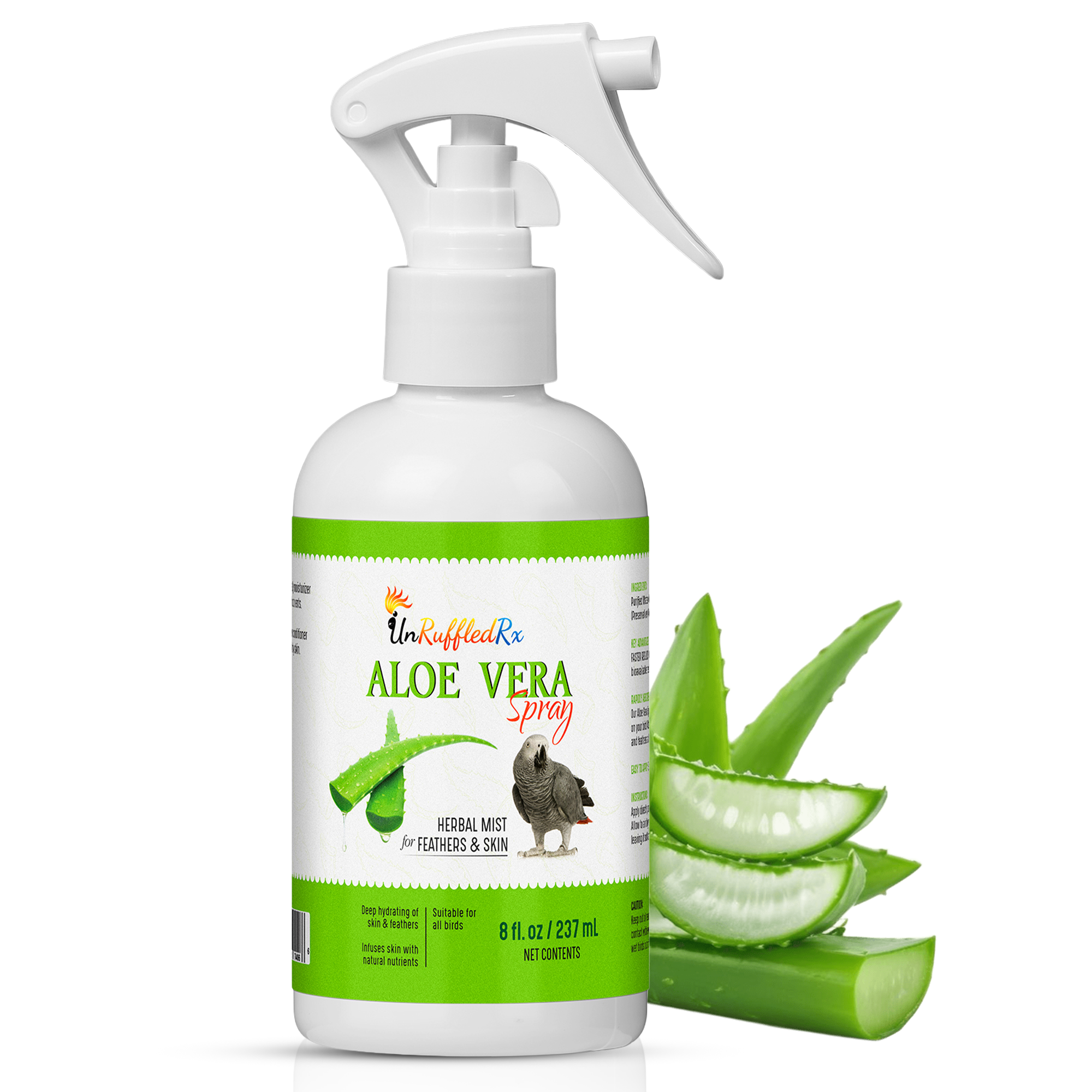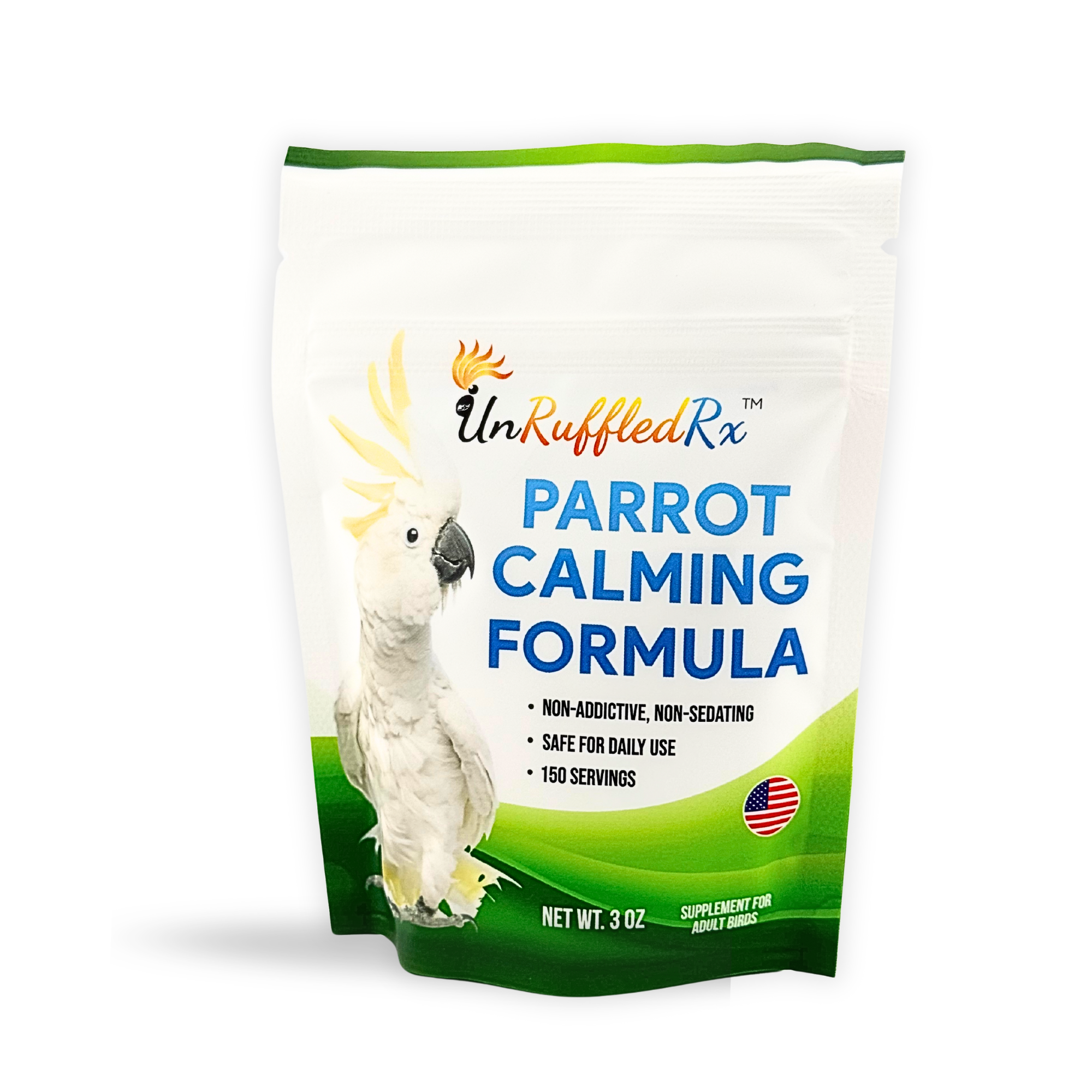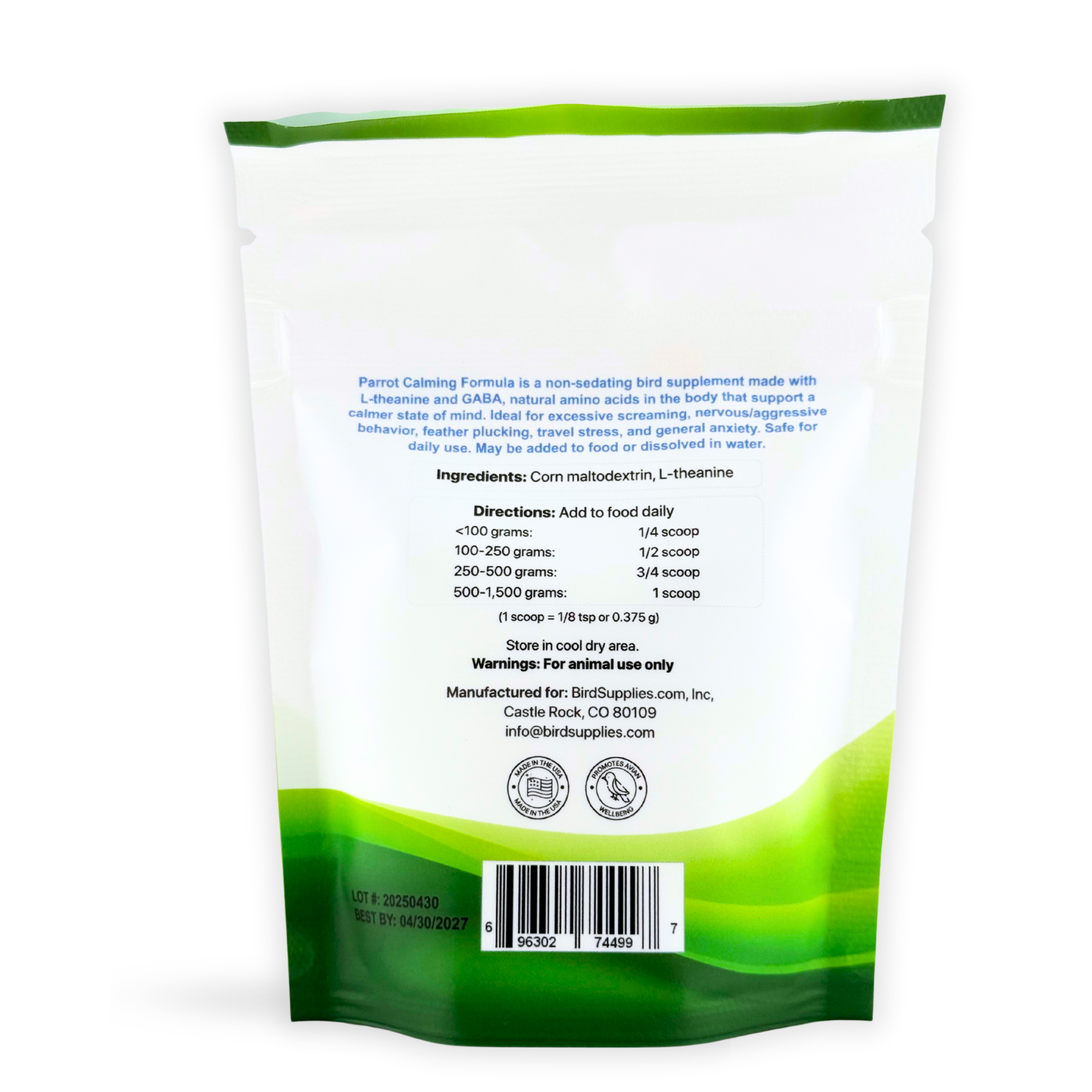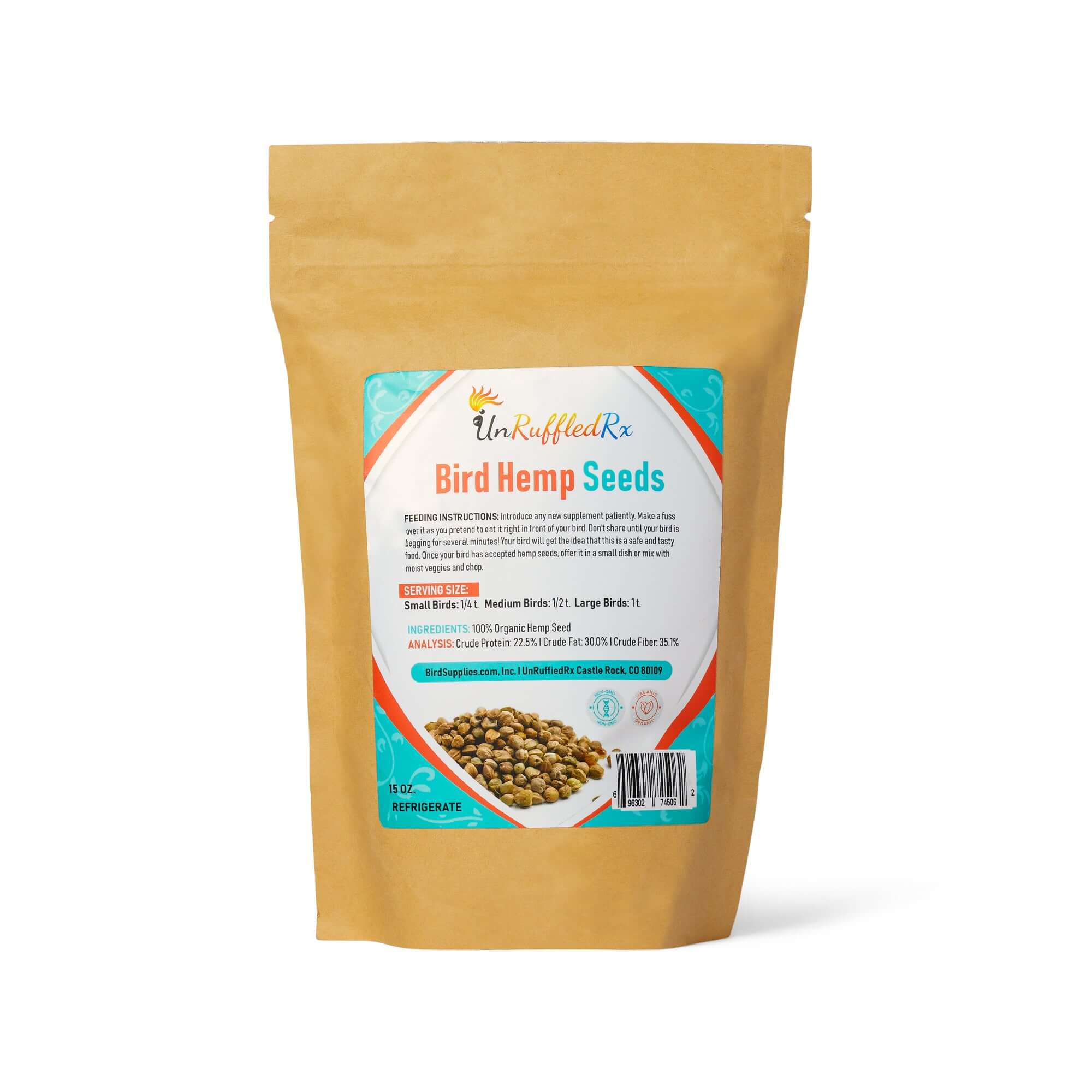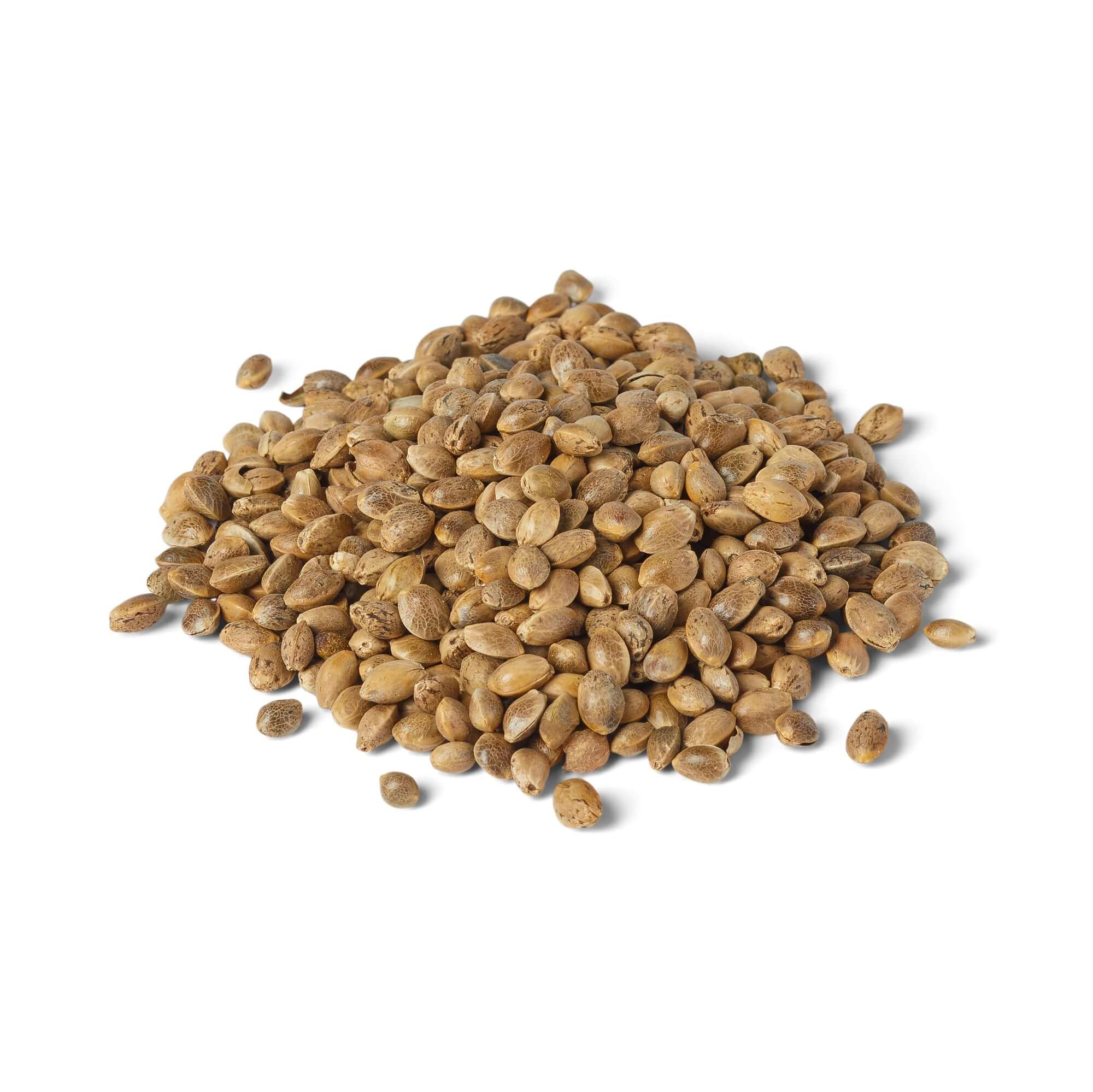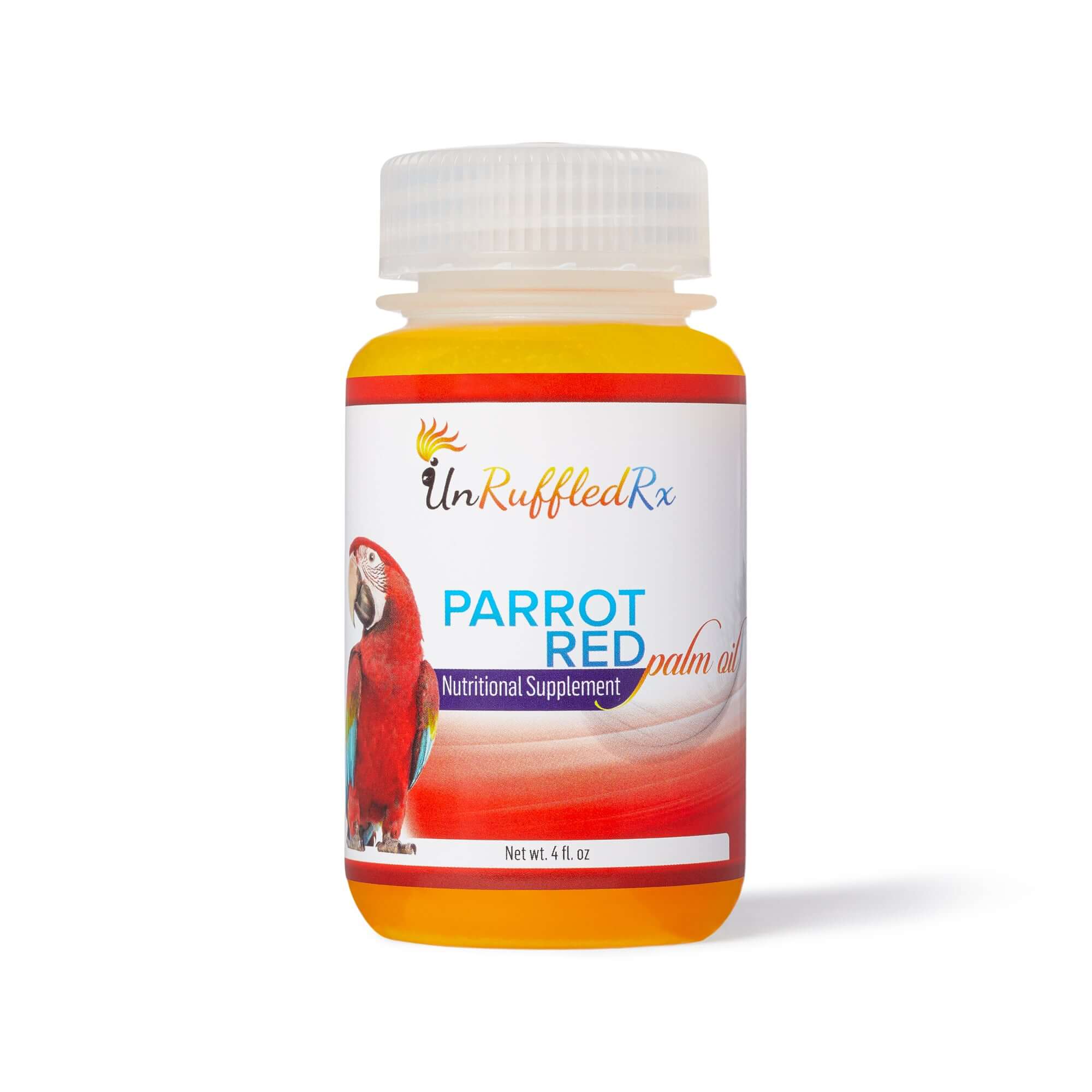Table of Contents
- Fumes and Teflon that are poisonous to birds
- Cigarettes and smoke
- Chemicals that are poisonous to birds
- Heavy Metal Poisoning: A common cause of death in pet birds
- Foods that are poisonous to birds
- Plants that are poisonous to birds
- Symptoms that your bird has been poisoned
- First aid for a poisoned bird
Did you know that common household items such as cleaning products, air fresheners, and even certain plants can pose a serious risk to your pet bird? These poisons for birds can be fatal if not detected quickly. Even if you take precautions to keep your pet bird safe, it is important to be aware of potential dangers in your home. In this blog post, we will discuss common household poisons that could be fatal to your pet bird, including discovering poison fumes, plants, and more.
Birds poisoning is a frequent occurrence. Bird’s have very unique bodies including specialized respiratory systems and digestive systems. They may be exposed to a variety of toxins and poisons in their cages or as they explore or perch around your home.
Lead paint from foreign manufactured bird cage bars or toys, consuming too much salt from human snacks such as crackers or chips or chewing on pop cans may lead to death or thousands in veterinary bills. Discover what toxic items in your home may contribute to poisoned birds and how to tell if your bird has been poisoned.
Fumes and aerosols
Birds have a highly sophisticated and ultra efficient respiratory system, making them particularly vulnerable to the inhalation of fumes and aerosols, which can be poisons for birds. Many everyday items can be toxic to your pet bird if not used properly. It is important to be aware of potential household toxins and take precautionary measures to protect your feathered friend.
Common sources of fumes and aerosol chemicals to be aware of include aerosol sprays, cleaning supplies, air fresheners, paints and paint removers, mothballs, gasoline, and insecticides. Any of these products that contain volatile organic compounds or strong odors could be hazardous for your bird. When using any of these items, make sure you are in a well-ventilated area away from your pet bird. Consider using natural alternatives to some of these items when possible, such as baking soda and vinegar for cleaning, or beeswax candles instead of chemical air fresheners.
Additionally, never use a non-stick cooking surface like Teflon (PTFE) around birds, as the fumes from this product can be fatal. PTFE isn't just on cookware. It is on carpets, mattresses, clothing, furniture, and other fabric surfaces. It is even on some pet toys and lightbulbs. If heated above 300 degrees F it will emit toxic fumes which can kill an unprotected bird within minutes.
Whenever you are using an appliance that heats up, take a look at whether it is coated with Teflon or other non-stick coatings. This could include ovens, space heaters, blow dryers, curling irons, and irons. Play it safe and never use a Teflon-coated appliance in the same room that your bird is in.

A Teflon pan can heat up to toxic levels within just a few minutes killing thousands of pet birds every year. At least 6 toxic gases are emitted at temperatures as low as 325. When exposed to the fumes, a bird's lungs hemorrhage and fill up with fluids causing the bird to suffocate. Learn more about how PTFE is poisonous to birds here.
Don't take a chance. Get rid of your teflon cookware.
- Never run a space heater near your bird.
- Never clean the oven with a bird in the proximity. If you need to clean your oven, take your bird to a place where it has plenty of ventilation.
- Never expose your bird to fragrances, chemical air fresheners,
- Never use aerosol sprays around your bird.
Cigarettes and smoke
Cigarette smoke, marijuana smoke, and even smoke from fires can be highly poisonous to birds. Not only do the fumes cause them physical discomfort and irritation, but the smoke particles can also be incredibly harmful if inhaled. Even second-hand smoke or smoke from candles can have an adverse effect on the respiratory health of birds. If you are a smoker, it is best to keep your pet bird in a separate area of your house that has been ventilated to avoid exposing it to any dangerous poisons for birds.
Wood-burning fireplaces can also produce dangerous poisons for birds. The smoke created when wood burns contain carbon monoxide, formaldehyde, and benzene which can all be lethal to birds. In addition, the creosote produced by wood-burning stoves can release toxins into the air which can contaminate the atmosphere within your home. Often, wood-burning fireplaces cause sudden death in birds.
Smoke damage may not be immediately apparent. And, keep in mind that birds instinctively hide illness and injuries. Any sign of unusual behavior should be taken seriously, especially if you suspect exposure to a toxic substance like smoke. Seek medical advice right away if your bird experiences persistent coughing, sneezing, wheezing, breathing difficulties, discharge from the nostrils or eyes, or changes in vocalizations such as croaking or gasping.
In addition to avoiding smoke, it's important to feed your bird a diet of pellets and nutritious plant-based foods. Fruits, vegetables, grains, and legumes are all excellent sources of vitamins and minerals that can help keep your bird healthy and happy. This helps their respiratory immune defenses.
It's important to never smoke around your pet birds as they are incredibly sensitive to the effects of smoke. If you do smoke, make sure you always wash your hands afterward and change your clothing before interacting with your bird. Doing this will ensure that the smoke residue and toxins on your hands or clothes do not get transferred onto your bird.
It's also important to protect your bird during times of poor air quality. Wildfires, dust storms, and other environmental disasters can result in increased levels of smoke and other pollutants in the air. If this happens, it's best to keep your bird inside with the windows closed and in an air-conditioned house if possible. This will help to filter out any smoke or toxins from the air and keep your bird safe from harm.
If you notice any of the signs mentioned above, it is important to get veterinary help immediately. This can include symptoms like breathing hard, bobbing their tails, sitting on the bottom of the cage fluffed up, or just acting lethargic and not wanting to eat much. If these signs are present, your bird may be suffering from the effects of smoke poisoning and needs to be seen by a veterinarian right away.
Chemicals that are poisonous to birds
Household chemicals can be very dangerous for birds. Many common household products such as bleach, disinfectants, detergents, paint and solvents contain toxic chemicals that can be fatal if ingested by a bird. Even cleaning supplies labeled "non-toxic" can contain harmful ingredients that can cause serious harm.
• Ammonia – This is a common ingredient in window cleaners, floor cleaners and some detergents. Even low concentrations of ammonia can irritate a bird's lungs, eyes and skin.
• Chlorine – This is found in many household cleaners and swimming pool treatments. Ingestion of chlorine can cause respiratory distress and eye damage.
• Insecticides – Many insecticides are highly toxic to birds and can cause severe neurological damage if ingested. If you must use insecticides, be sure to read the label carefully and follow all safety instructions.
• Rodenticides – These products contain ingredients that can cause severe gastrointestinal and neurological damage in birds.
• Paint and Solvents – Paints and solvents contain a variety of toxins, including lead and other heavy metals, that can be deadly if ingested. Before using any type of paint or solvent, make sure your pet bird is safely out of the area.
It is important to remember that even small amounts of chemicals can be poisonous to birds, so always take precautions when using any type of product around your pet bird. Store all hazardous materials out of reach and keep them tightly sealed to prevent accidental ingestion.
It is important to be aware of the common symptoms of chemical poisoning in birds, so you can act quickly if your pet bird is exposed. Symptoms to be on the lookout for include difficulty breathing, lethargy, eye irritation, nausea, vomiting, and seizures. If you suspect that your bird has been exposed to a chemical, it is important to seek veterinary attention right away.
Heavy Metal Poisoning: A common cause of death in pet birds
Heavy metal toxicosis is a serious health risk for pet birds, as they are particularly sensitive to heavy metals. Common sources of heavy metal poisoning include lead-based paints, galvanized wire, lead shot, zinc, copper and brass. Even ingesting small amounts of these substances can cause serious damage to your pet bird's internal organs, leading to illness and even death.
Signs of heavy metal poisoning in birds include lethargy, weakness, decreased appetite, and respiratory problems such as labored breathing and tail bobbing. A bird with heavy metal poisoning may also have a greenish or blackish discoloration to its feathers and skin.
To prevent heavy metal poisoning, always be aware of the materials used to build your bird's cage, toys, and other accessories. Inspect all toys and cages for any signs of rust or flaking paint that could contain lead. Additionally, never allow your pet bird access to any household items made from galvanized wire or other metals that could contain lead or other heavy metals.
Birds can also be exposed to heavy metals through bird toys that are made with galvanized wire, lead, or zinc - with lead being, by far, the most commonly seen. There are all sorts of household items in common homes that could harm a bird such as toys, curtain weights, jewelry, imported metal cages, caulking compounds, batteries, solder, fishing weights, foil, jig heads, tank linings, bearings, ceramics, plastics, candy wrappers, inks, paint, ammunition, and leaded glass.
Many inexpensive or foreign bird toys contain these materials, and if your pet bird chews or swallows any of these parts, it could lead to toxicosis. Be sure to inspect all of your bird's toys before giving them to your pet and throw away any toys that contain these materials. Look for bird toys made from natural materials such as wood or leather that are free from dangerous chemicals or metals.
If you suspect your pet bird has been exposed to any heavy metals, seek veterinary care immediately. The vet can perform a blood test to determine if the bird has been poisoned, as well as take steps to treat the toxicity and improve the bird's health.
Symptoms of heavy metal toxicity include lethargy, decreased appetite, weakness, labored breathing, tail bobbing, and greenish or blackish discoloration of feathers and skin. If your bird is displaying any of these symptoms, you should seek veterinary care immediately to determine if the bird has been poisoned and take important life-saving steps to treat the toxicity.
Foods that are poisonous to birds
There are a few common household foods that can be fatal to your pet bird.
- Avocado contains persin, a fatty acid-like substance that can be toxic to birds.
- Caffeine, chocolate, and salt should also be avoided as they can be toxic to birds.
- Fats from processed foods should also be avoided, as well as fruit pits and apple seeds which can cause choking or an intestinal blockage.
- Onions and garlic can cause anemia in birds and xylitol, which is often used as an artificial sweetener, is also toxic to birds.
It is so important to research any new food before offering it to your pet bird.
With that being said, birds need to eat a variety of bird-safe, raw plant-based foods for proper nutrition. Some great examples of bird-safe plant-based foods are carrots, celery, kale, broccoli, apples (without seeds or core), and various types of sprouts.
Make sure to avoid any food that is overly processed or contains a lot of sugar. As long as you provide a variety of fresh, nutritious food for your pet bird, it should be healthy and safe from any potential toxins.
Plants that are poisonous to birds
There's a new trend in the world of avian nutrition: uncooked plant-based foods. Variety is the key. Many avian nutrition experts suggest a diet of 40-50% organic pellets and 40-50% of nutrient-rich, plant-based foods that include fruits, vegetables, sprouts, fresh grains, herbs, flowers, and the like. Various bird-food specialty companies are starting to sprout up to support these nutritional needs.
However, it is important to know that many common household plants can be poisonous to birds. Be sure to research any plant before bringing it into your home to make sure it is not hazardous to your feathered friend - or other pets. Some of the most toxic plants for birds include lilies, amaryllis, azalea, holly, begonia, caladium, English ivy, and mistletoe. Even if a plant is not poisonous itself, the fertilizer used on it may contain toxic elements, such as zinc or lead.
Bird owners should also be aware of the dangers of mushrooms growing in their yards or gardens. Many species of mushrooms are deadly to birds, and these fungi should be removed immediately. Finally, be aware of the types of products used in the home that may contain plants or fungi.
Symptoms of Bird Poisoning
Look for these common symptoms of bird poisoning. Depending on the toxin, your bird may display one or more of these common poisoning signs:
- Vomiting
- Diarrhea
- Lethargy
- Increased urination
- Blindness
- Tremors
- Excitability
- Depression
- Staggering or lack of coordination
- Falling from perch
- Convulsions
- Coma
First Aid For A Poisoned Bird
- Immediately get your bird to safety.
-
For eye contact, flush the eye with lukewarm water or an eye wash.
-
For skin contact, flush the affected area with water.
-
For fume intoxication, remove the bird from the area altogether. Head over to your vets office immediately.
- Stabilize your bird in a clean, warm, safe bird hospital cage.
Call your veterinarian now!
- Bring a sample of the poison and its packaging.
- Bring a sample of the bird's most recent droppings.
- Provide general supportive care.
Common Culprits in Bird Poisoning
Respiratory Poisoning in Parrots
- Cleaning fumes
- General household cleaners
- Paint fumes
- Teflon
- Exposure to chemicals that irritate your respiratory system
- Insecticides
- Bleach fumes
Ingested Products
- Chocolate
- Onions and Garlic
- Comfrey (herb)
- Avocado
- Fruit Pits and apple seeds
- High fat, sodium or sugar foods
- Sugar-free candy
- Alcohol
- Mushrooms
- Caffeine
- Tomato leaves
- Dried, uncooked beans
- Certain household plants
- Human medication
- Certain household plants
(The following is a list of some potentially toxic plants. Be sure you correctly identified all plants in your bird's environment.When using these lists, ensure you use the Scientific Name to identify Plants, if uncertain remove the plant )
(Abbreviations: Spp=subspecies, Sp=species)
|
Plant Name |
Scientific Name |
Parts Known to be Poisonous |
|
Acokanthera |
Acokanthera spp. |
all parts toxic |
|
Amaryllis |
Amaryllidaceae |
Bulbs |
|
American Yew |
Taxus canadensis |
Needles, seeds |
|
Angel's Trumpet |
Datura spp., |
leaves, seeds, flowers |
|
Apricot |
Prunus armeniaca, |
pits, leaves, and bark |
|
* Autumn Crocus |
Colchicum autumnalle |
bulb |
|
Avocado |
Persea americana |
pit, leaves, unripe fruit, and stems |
|
Azalea |
Rhododendron occidentale |
Leaves |
|
Balsam pear |
Memordica charantia |
Seeds, outer rind of fruit |
|
Baneberry |
Actaia spp. |
Berries, roots |
|
Belladonna |
Atropa belladonna |
All parts |
|
Bird of Paradise |
Caesalpina gilliesii |
Seeds |
|
Bittersweet |
Celastrus spp. |
All parts |
|
Black Locust |
Robinia pseudoacacia |
Bark, sprouts, foliage |
|
* Bleeding Heart |
Dicentra |
all parts |
|
Bluegreen algae |
Schizophycaea spp |
Some forms toxic |
|
Bracken Fern |
Pteridium aquilinum |
All parts |
|
Some forms toxic Boxwood |
Buxus sempervirens |
Leaves, stems |
|
Buckthorn |
Rhamnus spp. |
Fruit, bark |
|
Burdock |
Arctium spp. |
All parts |
|
Buttercup |
Ranunculus spp. |
Sap, bulbs |
|
Calla lily |
Zantedeschia aethiopica |
Leaves |
|
Caladium |
Caladium spp. |
Leaves and rhizome |
|
Castor Oil Plant |
Ricinus communis |
Beans, leaves |
|
Catclaw Acacia |
Acacia greggii, |
twigs and leaves |
|
Chalice vine |
Solandra spp. |
All parts |
|
Cherry tree |
Prunus spp. |
Bark, twigs, leaves, pits |
|
Chinaberry |
Melia azadarach |
All parts |
|
Chokecherry |
Birdcherry Prunus |
seeds (stones), |
|
Christmas candle |
Pedilanthus tithymaloides |
Sap |
|
Clematis |
Clematis spp. |
All parts |
|
Coral plant |
Jatropha multifida |
Seeds |
|
Cowslip |
Caltha polustris |
Seeds |
|
Crocus (autumn) |
Cholchicum autumnale |
All parts |
|
Cycad, or Sago Cycas |
Cycas revoluta |
All parts |
|
Daffodil |
Narcissus spp |
Bulbs |
|
Daphne |
Daphne spp. |
Berries |
|
Datura |
Datura spp. |
Berries |
|
Deadly amanita |
Amanita muscaria |
All parts |
|
Death camas |
Zygadenis elegans |
All parts |
|
Delphinium |
Delphinium spp. |
All parts |
|
Devil's Ivy |
Epipremnum aureum |
All parts |
|
Dieffenbachia |
Dieffenbachia picta |
Leaves |
|
Eggplant |
Solanaceae spp. |
All parts but fruit |
|
Elderberry |
Sambucus mexicana, |
roots, leaves, stems, bark |
|
Elephant's ear (taro) |
Colocasis spp. |
Leaves, stem |
|
English ivy |
Ilex aquafolium |
Berries, leaves |
|
English yew |
Taxus baccata |
needles, seeds |
|
Euonymus |
Euonymus spp. |
fruit, bark, leaves |
|
European Pennroyal |
Mentha pulegium |
|
|
False henbane |
Veratrum woodii |
All parts |
|
Figs |
Ficus spp |
sap |
|
Fly agaric mushroom (deadly amanita) |
Amanita muscaria |
All parts |
|
Four o'clock |
Mirabilis jalapa |
All parts |
|
Foxglove |
Digitalis purpurea |
Leaves, seeds |
|
Golden chain (laburnum) |
Laburnum anagyroides |
All parts, especially seeds |
|
Heliotrope |
Heliotropium spp., |
leaves |
|
Hemlock |
poison Conium spp. |
All parts, especially roots and seeds |
|
Hemlock |
water Conium spp. |
All parts especially roots and seeds |
|
Henbane |
Hyocyanamus niger |
Seeds |
|
Holly |
Ilex spp. |
Berries |
|
Horse chestnut |
Aesculus spp. |
Nuts, twigs |
|
Horse Nettle |
Solanum carolinense |
All parts |
|
Hyacinth |
Hyacinthinus orientalis |
Bulbs |
|
Hydrangea |
Hydrangea spp. |
Flower,bud |
|
Indian turnip (jackinthepulpit) |
Arisaema triphyllum |
All parts |
|
Iris (blue flag) |
Iris spp. |
Bulbs |
|
Ivy (Boston, English, and some others) |
Hedera spp. |
All parts |
|
Japanese yew |
Taxus cuspidata |
Needles, seeds |
|
Java bean (lima bean) |
Phaseolus lunatus |
Uncooked beans |
|
Jerusalem cherry |
Solanum pseudocapsicum |
Berries |
|
Jessamine, Yellow |
Gelsemium sempervirens, |
leaves, stems |
|
Jonquil |
Narcissus jonquilla |
All parts |
|
Jimsonweed (thornapple) |
Datura spp. |
Leaves, seeds |
|
Juniper |
Juniperus virginiana |
Needles, stems, berries |
|
Lantana |
Lantana spp. |
Immature berries |
|
Larkspur |
Delphinium spp. |
All parts |
|
Laurel Kalmia, Ledum |
Rhododendron spp. |
All parts |
|
Lilly of the valley |
Convallaria majalis |
All parts, including the water in which they have been kept |
|
Lobelia |
Lobelia spp. |
All parts |
|
Locoweed |
Astragalu mollissimus |
All parts |
|
Lords and ladies (cuckoopint) |
arum sp. |
All parts |
|
Lupine |
Lupinus spp. |
All parts |
|
Marijuana |
Cannabis sativa |
Leaves |
|
Mayapple |
Podophyllum spp. |
All parts, except fruit |
|
Mescal bean |
Sophora spp. |
Seeds |
|
Mistletoe |
Santalales spp. |
Berries |
|
Milkweed |
Asclepias spp. |
All parts |
|
Mock orange |
Poncirus spp. |
Fruit |
|
Monkshood |
Aconitum spp. |
Leaves, roots |
|
Moonseed |
Menispermum canadense |
All parts |
|
Morning glory |
Ipomoea spp. |
All parts |
|
Mushrooms |
Amanita spp. and many others |
All parts |
|
Narcissus |
Narcissus spp. |
Bulbs |
|
Nightshades (all types) |
Solanum spp. |
Berries, leaves |
|
Oak |
Quercus |
acorn, young plant |
|
Oleander |
Nerium oleander |
Leaves, branches, nectar of blossoms |
|
Pennyroyal |
Mentha pulegium |
All parts |
|
Peach |
Prunus persica, |
leaves, pit, bark |
|
Peony |
Paeonia officinalis |
All parts |
|
Periwinkle |
Vinca minor, Vinca rosea |
All parts |
|
Peyote |
Lophophora williamsii |
All parts |
|
Philodendron |
Philodendron spp. |
Leaves, stems |
|
Pigweed |
Amaranthus spp. |
All parts |
|
Plum |
Prunus spp., |
leaves, pit, bark |
|
Poison Hemlock |
Conium maculatum |
All parts |
|
Poison ivy |
Toxicodendron radicans |
Sap |
|
Poison oak |
Toxicodendron quercifolium |
Sap |
|
Poison Sumac |
Rhux vernix |
All parts |
|
Poinsettia |
Euphorobia pulcherrima |
Leaves, flowers |
|
Pokeweed (inkberry) |
Phytolacca americans |
Leaves, roots, immature berries |
|
Poppy |
Papaver somniferum and related spp. |
All parts |
|
Potato |
Solanum tuberosum |
Eyes and new shoots |
|
Pothos |
Eprimemnun aureum |
All parts |
|
Primrose |
Primula spp. |
All parts |
|
Privet |
Lingustrum volgare |
All parts, includling berries |
|
Ragwort |
Senecio jacobea and related spp. |
All parts |
|
Red Maple |
Acer rubrum |
All parts |
|
Rhododendron |
Rhododendron spp. |
All parts |
|
Rhubarb |
Rheum rhaponticum |
Leaves |
|
Rosary pea (Indian licorice) |
Abrus precatorius |
Seeds |
|
Sage |
Salvia officinalis |
All parts |
|
Sedum |
Sedum |
All parts |
|
Shamrock Plant |
Medicago lupulina, Trifolium repens, Oxalis acetosella |
All parts |
|
Skunk cabbage |
Symplocarpus foetidus |
All parts |
|
Snowdrop |
Ornithogalum umbellatum |
All parts, especially buds |
|
Snow on the mountain (ghostweed) |
Euphorbia marginata |
All parts |
|
Sorrel |
Rumex spp., Oxalis spp. |
All parts |
|
Spindle Tree |
Euonymus |
leaves, fruit, bark |
|
Spurges |
Euphorbia spp. |
All parts |
|
Star of Bethlehem |
Ornithogalum umbellatum |
All parts |
|
Sweet pea |
Lathryus latifolius |
Seeds and fruit |
|
Tansy |
Tanacetum vulgare |
all parts |
|
Tobacco |
Nicotinia spp. |
Leaves |
|
Tomato |
Lycopersicon esculentum |
stems and leaves |
|
Tulip |
Tulipa spp. |
All parts |
|
Vetches |
Vicia spp. |
All parts |
|
Virginia creeper |
Pathenocissu quinquefolia |
Sap |
|
Water Hemlock |
Cicuta spp. |
|
|
Waxberry |
Symphoricarpos albus |
|
|
Western yew |
Taxus breviflora |
Needles, seeds |
|
Wisteria |
Wisteria spp. |
All parts |
|
Yam bean |
Pachyrhizus erosus |
Roots, immature pods |
Prevention
The best cure for bird poisoning is prevention. Bird-proof your home before your bird is exposed to or gets into a poisonous substance.
- Teflon products
- Cleaning solutions, especially aerosols
- Heavy metals - use only reputable bird toys and bird supplies
- Never give your bird pop cans to chew
- Mop up all potentially poisonous spills immediately.
Related Posts:
How To Help A Bird With Respiratory Problems
D-R-O-P Approach To Bird Burns
How To Make a Parrot Hospital Cage
References:
Household Hazards for Pet Birds - Merck Veterinary Manual
Avian First Aid DVD by Greg Burkett, DVM
https://wagwalking.com/bird/condition/heavy-metal-toxicosis
https://theparrotsocietyuk.org/site/index.php/parrot-information/veterinary-advice/poisons-parrots/poisons-and-toxins/
https://whisperingpinespc.com/bird-safety-toxic-effects-smoke/
Diane Burroughs, LCSW is a licensed psychotherapist trained in ABA therapy techniques. She specializes in avian anxiety disorders and is certified in Nutrition For Mental Health. Diane has written a number of bird behavior books and she offers behavior consultations. She's developed a range of UnRuffledRx Science-backed Parrot Wellness Supplies.
Diane's products have been featured in the Journal of Avian Medicine and Surgery and at Exoticscon, a conference for exotic pet veterinarians. Her bird collars & supplements are stocked in avian vet clinics and bird stores throughout the US. With over 30 years in the field of behavior, Diane has created thousands of successful individualized behavior plans that help pets thrive.
TAGS: #BirdPoisoning #PoisonedBirds
SHARING IS CARING! PLEASE SHARE ON YOUR FAVORITE SOCIAL MEDIA NOW!


 Bird poisoning can occur through inhalation of fumes, consuming poisons, or even by absorbing poisons through their skin.
Bird poisoning can occur through inhalation of fumes, consuming poisons, or even by absorbing poisons through their skin.



